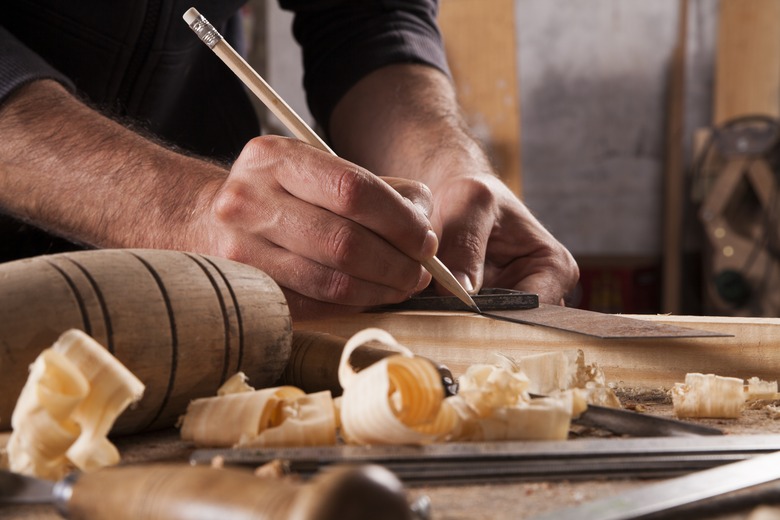How To Read A Ruler In Tenths
If you're looking at a ruler that is marked off in groupings of tens or tenths, then you're looking at a metric ruler, or at least the metric side of your ruler, which might have inches marked on the other side. You'll want to use the metric side if you're asked to measure something in centimeters or millimeters, and the process for reading it is almost exactly the same as how you'd read the side with inches.
1. Line the Ruler Up
Line the ruler up with whatever it is you're measuring. Because it can measure only straight lines, ideally the ruler should line up against a straight edge on the object being measured. But you can also imagine (or draw) a guideline to help you measure other aspects of the objects, like the distance from one side to another through the middle.
TL;DR (Too Long; Didn't Read)
If your ruler has both inches and centimeters (or metric) measurements on it, make sure the edge with the measuring unit you want is flush against whatever you're measuring.
2. Line up the Zero
Align the "zero" on the ruler with the spot where you want your measurement to start. The "zero" is almost never on the exact edge of the ruler, so if you line up the outside edge of the ruler instead, your measurement will be off.
3. Note the Centimeters
Read along the ruler, starting at the "zero" mark, until you reach the far edge of whatever you're measuring. Note where that edge falls between the centimeter marks (the large, numbered marks on the tenths or metric side of any ruler). If it falls right on a centimeter mark, you can note down the number of centimeters and be done.
If the end of your measurement falls in between centimeter marks, note the number of centimeters before reaching the edge and continue to the next step.
4. Count Millimeters
Count the small, numberless hatch marks leading forward from the last centimeter mark, up to the edge of whatever you're measuring. These numberless hatch marks measure millimeters, and each one is worth 0.1 centimeter.
5. Write Down Your Measurement
Note down the number of centimeters first, followed by a decimal point and then the number of millimeters. So if the end of whatever you're measuring fell between the 5-centimeter mark and the 6-centimeter mark on your ruler, and then you counted forward another 4 millimeters from the 5-centimeter mark, your end measurement would be 5.4 centimeters.
Cite This Article
MLA
Maloney, Lisa. "How To Read A Ruler In Tenths" sciencing.com, https://www.sciencing.com/read-ruler-tenths-8521277/. 14 May 2018.
APA
Maloney, Lisa. (2018, May 14). How To Read A Ruler In Tenths. sciencing.com. Retrieved from https://www.sciencing.com/read-ruler-tenths-8521277/
Chicago
Maloney, Lisa. How To Read A Ruler In Tenths last modified March 24, 2022. https://www.sciencing.com/read-ruler-tenths-8521277/
